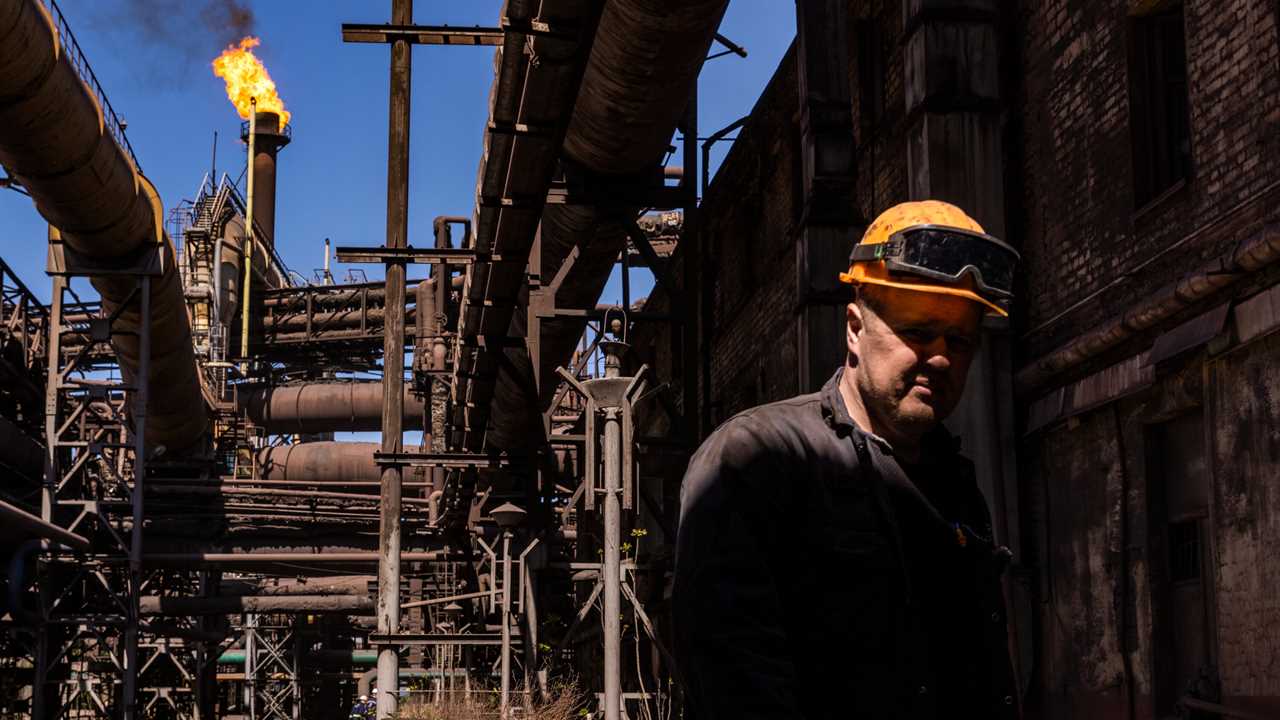
WASHINGTON — The Biden administration will announce that it is lifting tariffs on Ukrainian steel for one year, halting a measure that President Donald J. Trump placed on that country and many others in 2018, according to a copy of the announcement that will be released on Monday and was viewed by The New York Times.
The move comes as the Biden administration looks for ways to assist Ukraine during the Russian invasion. Ukraine is a fairly minor supplier of U.S. steel, shipping about 218,000 metric tons in 2019, to rank 12th among America’s foreign suppliers. However, the sector is a significant source of economic growth and employment for Ukraine, and steel mills have continued to provide paychecks, food and shelter for their workers through the war.
When Prime Minister Denys Shmyhal of Ukraine visited Washington last month, he told administration officials that some Ukrainian steel mills were starting to produce again after initially shutting down because of the invasion. He asked the Biden administration to suspend the tariffs, a senior Commerce Department official, who was not authorized to speak publicly before the official announcement, said on Monday.
The United States imposed a 25 percent tariff on foreign steel and a 10 percent tariff on foreign aluminum three years ago on national security grounds, arguing that a flood of cheap metal had decimated American manufacturing, posing a threat to its military and industrial capacity.
Ukraine is a significant steel producer, ranking 13th globally. Most of the country’s factories and other economic activity have been frozen as workers are called off to fight and shipments of parts and raw materials are disrupted during the war. Many major Ukrainian steel mills halted their operations in late February because of major disruptions to logistics routes required to ship metal out of the country, analysts at S&P Global said.
The senior Commerce Department official said that Ukrainian steel plants had been cut off from some of their more traditional markets in the Middle East and Africa, as the war closed shipping lanes through the Black Sea. In order to continue to support its plants, the Ukrainian government is now aiming to move steel by rail to Romania, and then on to markets in Europe, Britain and the United States, the official said.
The Commerce Department has noted that the steel industry is uniquely important to Ukraine’s economic strength, employing 1 in 13 people there.
A steel mill in Mariupol under siege by Russian forces sheltered thousands of Ukrainian soldiers and civilians for weeks. Russian and Ukrainian officials said on Saturday that all the women, children and elderly people who had been trapped for weeks in the plant were evacuated.
“For steel mills to continue as an economic lifeline for the people of Ukraine, they must be able to export their steel,” Gina M. Raimondo, the commerce secretary, said in the announcement. “Today’s announcement is a signal to the Ukrainian people that we are committed to helping them thrive in the face of Putin’s aggression, and that their work will create a stronger Ukraine, both today and in the future.”
The move comes in addition to a variety of economic measures aimed at penalizing Russia and assisting Ukraine. Those include a broad swath of sanctions on Russian entities, export controls that have limited Russian imports and $3.8 billion in arms and equipment for the Ukrainian government, in addition to other direct financial assistance.
Russia-Ukraine War: Key Developments
Victory Day. President Vladimir V. Putin used his May 9 holiday speech to falsely depict his invasion of Ukraine as an extension of the struggle against Nazism in Europe. But contrary to some expectations, he did not make any new announcements signaling an escalation of the war.
Senators last month called on the administration to lift the steel tariffs, saying it would help the industry to bounce back immediately after the war.
“Lifting the U.S. tariff on steel from Ukraine is a small but meaningful way for the U.S. to signal support for Ukraine and to provide stability,” Senator Patrick J. Toomey, Republican of Pennsylvania, and Senator Dianne Feinstein, Democrat of California, wrote in a letter.
Many other major steel-producing countries have had their tariffs lifted or eased. During his presidency, Mr. Trump negotiated deals with South Korea, Mexico, Canada and other countries to replace the tariffs with quotas or so-called tariff rate quotas, which restrain the volume of a product coming into the United States but allow at least some of it to be imported at lower tariff rates.
In recent months, the Biden administration has negotiated deals with the European Union, Britain and Japan to ease metal tariffs while still maintaining some protections that domestic steel makers have called for.
The Commerce Department official said that the administration did not want to subject Ukraine to a similar extended negotiation to change the tariffs at this time, but that it would be ready to discuss a further arrangement after the one-year suspension expired.






